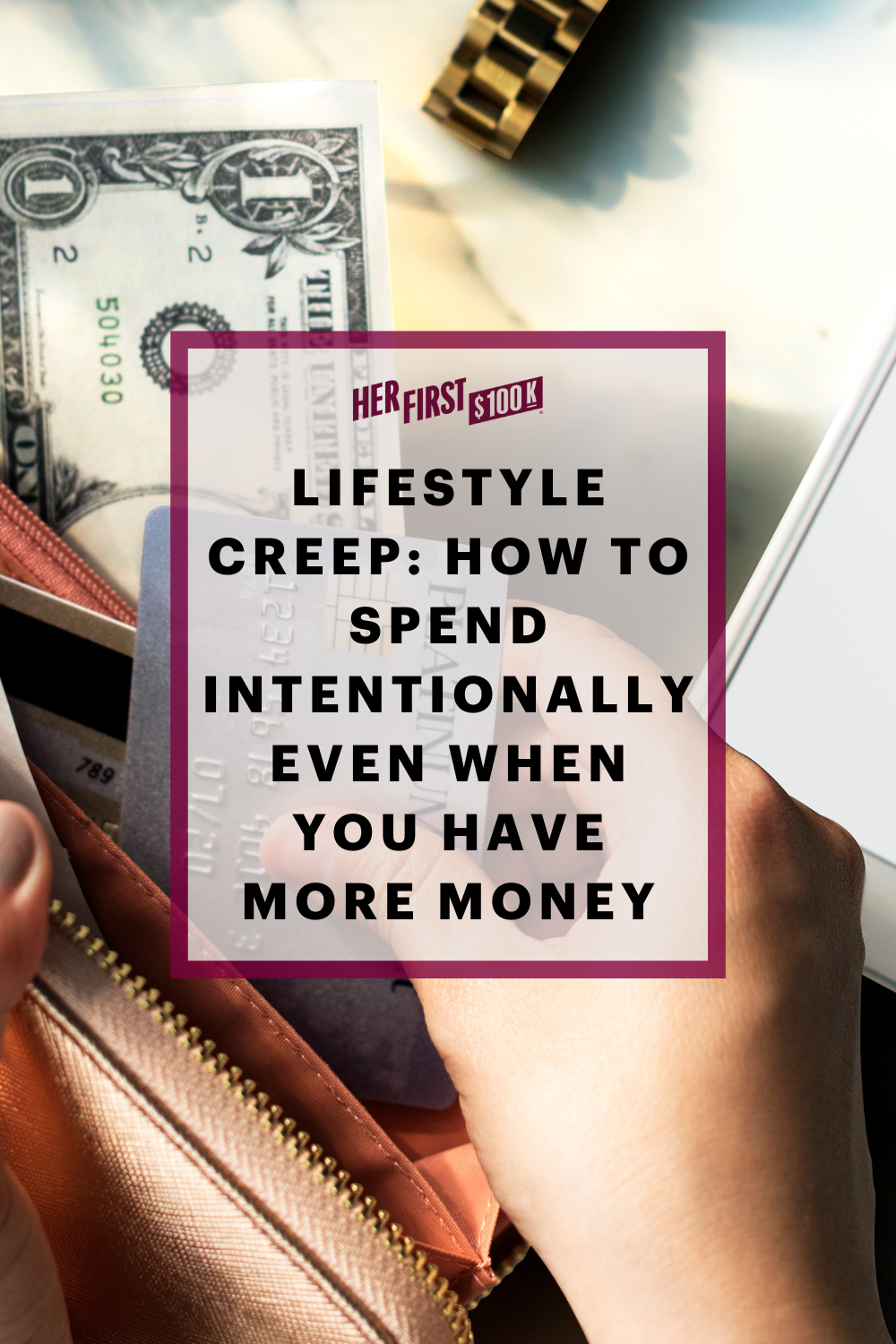The following article may contain affiliate links or sponsored content. This doesn’t cost you anything, and shopping or using our affiliate partners is a way to support our mission. I will never work with a brand or showcase a product that I don’t personally use or believe in.
Chances are you’ve listened to a podcast recently. Actually, there’s a good chance you listened to one today. Financial Feminist is the number one business podcast in the world, which is pretty damn impressive since there are a reported two million podcasts available right now.
Since Her First $100K®’s podcast launched in 2021, we get what it’s like to be a podcast beginner. Companies like Spotify, Apple, and Google make it easy for users to listen, which is why beginning a podcast has never been easier. Half of all Americans above the age of 12 have listened to a podcast at least once in their lives—that equates to 144 million podcast listeners in total. People are consuming podcast content at absurd rates. So, if you’ve been wanting to start a podcast but don’t know where to start—we got you.
Keep scrolling for Financial Feminist’s Guide on Podcasting for Beginners!
Pick a topic
Before we teach you how to create a podcast, you’ve got to know what you want to talk about. Sports? Culture? Food? Relationships? All of the above??? The options are endless. However, try not to let that overwhelm you. Our advice is to focus on your zone of genius. In other words, combine your interests, passions, and skills, and voilà – you’ve found your niche. Now, you’ve just got to settle on a name.
Choose a format
Whether you want to have a co-host, interview guests, or simply talk to your listeners directly, you will need a format. The format of your first episode doesn’t necessarily need to be the one you stick with, but consider it a jumping-off point. Factors like length, number of people speaking, and your own personal style will all influence the format.
Here are the basics to remember:
Intro: Tell your listeners who you are and what your show is about. Take this time to show your personality because it will dictate the tone of your podcast. You’ve got to capture your audience’s attention to keep them listening. Take time to thoroughly brainstorm how you want to position yourself.
Episode content: This is the bulk of the format. It’s crucial to decide what you want to discuss before recording. If you have a guest, do your research beforehand to help guide the conversation. Write down notes for yourself to refer to during recording so it can be as seamless as possible. The beauty of podcasting is that you can always edit parts out if you go on a tangent or jumble your words. Remembering that helps take the pressure off.
Outro: Time to wrap it up! This is where you include a CTA (call to action). Prompt your listeners to subscribe and tell them when new podcast episodes drop. Explain where to follow you and your guests (if you have them) on social media. Also, this part is crucial: Ask them to rate and review your show. This will help you grow your audience.
Record and edit
This might seem like a given, but hey, we want to cover all the steps to prepare you to create a successful AF podcast. The podcast beginner probably doesn’t know the first thing about recording and editing audio. Don’t worry because it’s really not that complicated.
What would you say if we told you that you don’t need to run to the store to buy a fancy-schmancy microphone? If you have a working laptop and Skype capability then you can record a podcast sans pricey mic.
Riverside.fm is a great option mainly because of its versatility. The basic plan is a smart decision for beginners and as your podcast grows, you can upgrade to their standard or pro plan. Regardless of the plan you choose, expect studio quality that produces 4k video and WAV audio content.
Call Recorder for Skype is another option available for Intel-based Macs. Other software like Audacity pairs well with PCs and Macs, which makes it a versatile (and free!) option. It has the capability to record live audio, record computer playback on any Windows Vista or later machine, and convert tapes and records into digital recordings. It also allows you to edit WAV, AIFF, FLAC, MP2, MP3, Ogg Vorbis sound files, and you can cut, copy, splice, or mix sounds together. You can also change the speed, pitch, or tempo. Plus, there are a ton of other features listed here.
Upload
Once you’ve finished recording, editing, and producing your first podcast episode, you’re ready to upload it to a hosting site. Hosting sites are companies that distribute the podcast to platforms like Apple Podcasts, Spotify, and Google Podcasts. Libsyn, Soundcloud, Anchor, and Transistor are popular options.
Create a website
Websites are crucial. What do we do when we want to find out information? GOOGLE. You want your site to appear so people can learn what the podcast is about. Think of it as a hub to explain more about you (the fabulous host) and what the podcast is about. Bluehost and Squarespace are fantastic website-building options.
Promote
Promote the hell out of your podcast. Tell your family, friends, and the guy who works at your favorite coffee shop about it. In all seriousness, if you want people to listen then they need to know about it. Create an Instagram, Twitter, and Facebook page for the podcast.
Embrace your creative side and utilize sites like Canva to create original graphics. If you want to take your podcast to the next level, record your sessions and create short video clips to share on social media. Email marketing is also extremely valuable. Flodesk helps you design emails that people will look forward to reading.
Hire a team
If you plan to outsource responsibilities (editing, promotion, etc.), you’ll need to pay people for their work. An easy tool to use is Gusto, which makes building a team a seamless experience. It helps with onboarding, payroll, and more. Pro tip: When your podcast begins to create revenue, apply for a business credit card for all your podcast-related expenses.
We hope you’ve enjoyed this Guide on Podcasting for Beginners. Podcasting is a great outlet for creativity and lets you connect with people. It’s also a powerful tool for building a brand and business. Do you have a podcast idea? Tell us in the comments!
I get asked all the time: “where do I start?!”
Take my free money personality quiz for step-by-step guidance and actionable resources to meet you at each stage of your unique financial journey.



